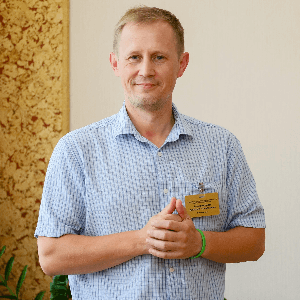Title : Did use of electronic cigarettes and smokeless tobacco by Belarusian teenagers and young adults has urging and aggravating or preventive and replacement public health effect on tobacco smoking?
Abstract:
Background: Belarus still have a high population level of tobacco consumption. Tobacco smoking in Belarus is major risk for the NCDs mortality (1). E-cigarettes and heat-not-burn products (HTP) are becoming increasingly popular as an alternative to cigarettes. There a lot of discussions is novel products a «gateway» to smoking for tobacco naive youngsters or could prevent it.
Aims & Objectives: Main aim was to determine the patterns of smoking and vaping. Goals were estimate changes of such behavior among young age groups and analyze shifts in prevalence during last 5 years.
Method: We conduct analysis of the two recent Belarus surveys data: 2016 and 2020 STEPS (prevalence of the main risk factors for NCDs among the population aged 18 - 69), 2015 and 2021 Global Youth Tobacco (GYT) (prevalence of the smoking and vaping among the students aged 13 - 15). The statistical processing was performed using the Microsoft Office software package; Pearson's correlation analysis to analyze the correlation between smoking and vaping (current or past) patterns, product type and age.
Results: According to the 2016 and 2020 STEPS surveys (n=5010, n=5385 respectively) prevalence of current smoking in aged 18 – 69 from 29.6% to 26,7% respectively (from 31.3% to 25.9% in aged 18–29 for 2016 and 2020) (2, 3). Prevalence of vaping among current smokers was 3,8% in 2016 and 6,1% 2020 (9.9% and 13,% respectively of aged 18–29). Percentage of former smokers are 14.4% (including 8.3% of respondents aged 18–29 years). Percentage of former vapers among current tobacco smokers and non tobacco smokers was 5,4% and 0,9% respectively in aged 18 – 69 respondents (8.1% and 1.8% of respondents aged 18–29 years). Prevalence of HTP consumption in 2020 was 3,0% and 7,6% of aged 18-69 and aged 18–29 respectively (no 2015 data 2015). Correlation analysis revealed no significant correlation between current and former tobacco smoking with current and past e-cigarettes use and current HTP use in any year and any age groups including aged 18-29. Prevalence of current smoking among 13–15 years adolescents estimated by the GYT (n = 2992, n = 3493, 2015 and 2021 respectively) decreased from 9.4% to 7.6% (4, 5). The number of smokeless tobacco users increased from 0.6% in 2015 to 1.7 in 2021 GYT Survey. Prevalence of vaping in 2021 was 15.1 % (boys 14.7, girls 15.5 (no 2015 data). Percentage of former tobacco users decreased from 36.5% in 2015 to 27.2 % in 2021. Correlation analysis revealed no significant relation between current cigarettes and smokeless tobacco use in any year and between smoking and vaping in 13–15 aged.
Discussion & Conclusion: Recent surveys in the Belarus have shown decrease in smoking both among young adults and teenagers and increase in vaping in young adults but non among teenagers. Some adult smokers switch from traditional cigarettes to use of HTP and quit smoking. Instead of media translated fears about consumption of HTP by teens our analysis found no evidence of such products spreading.
Keywords: tobacco smoking reduction, heat-not-burn products, e-cigarettes, smokeless tobacco, young population




